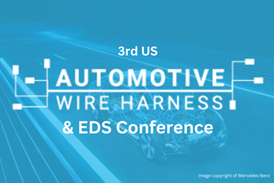Why automotive companies are looking to a new model to enable digital transformation
New technology, economic uncertainty and changing consumer patterns are making it vital to for automotive companies to adapt and respond quickly to these changing conditions. To do this, they need to run flexible and responsive automotive supply chains. However, today’s legacy, monolithic IT architectures are no longer fit for purpose and are undermining the ability to adapt, innovate, and stay competitive.
In addition, there is much uncertainty related to the rapid influx of technologies poised to disrupt automotive and manufacturing sectors, and changing trade policies that will likely impact supply chain performance.
KPMG’s Global Manufacturing Outlook for 2019 found that “nearly two-thirds of manufacturing CEOs agree that acting with agility is the new currency of business; if we’re too slow, we will be bankrupt.”
6 Factors Sabotaging Innovation
Despite this need, many automotive companies are slow, inefficient, and unable to adapt, because they are challenged with:
- Inflexible enterprise architecture
- No support for emerging technologies
- Difficult to collaborate with trading partners
- Disparate, unsynchronized master data
- Conflicting siloed data
- Inability to plan the entire supply chain
However, new technology is addressing all of these problems at the root cause, with the emergence of multi-party networks.
This report from One Network Enterprises (ONE) explains how these multi-party digital networks can embrace and enhance your current systems, and provide a digital platform that connects your systems and your trading partners for a more collaborative, optimized and responsive supply chain.
Real-time Digital Networks
What They Are
Rather than requiring trading partners to integrate multiple times across different systems, multi-party networks allow each partner into a node or hub across the greater network, allowing all trading partners – including OEMs, suppliers, 3PLs and carriers – to communicate and update the network simultaneously.
What They Do
- Connect companies and technologies to provide full visibility and real-time collaboration with partners
- Enable faster, cheaper and pre-emptive problem resolution
- Leverage new technologies like artificial intelligence and machine learning to optimize and automate for better results
How You Benefit
Multi-party networks yield many strategic, operational and financial benefits, including:
- Remove disconnects and delays enabling full visibility, better decisions, and improved supply chain performance across the network
- Reduce inventory levels 10-30% or more
- Reduce transport costs and expedited freight by 30-50%
- Improve service levels to over 95%
- And much more
To find out more, read the full white paper: Digital Transformation for Automotive & Manufacturing
By signing up and downloading the white paper you agree to the One Network Enterprises and Ultima Media Joint Privacy Policy.






